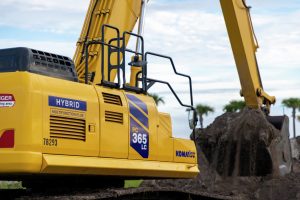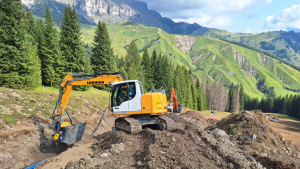What’s driving demand for these low-voltage cables?
N2XH low-voltage (0.6/1kV) power cables have long been specified for fixed wiring in industrial
buildings across the EMEA region. However, their popularity is growing, including in the UK. Let’s
delve into how these cables are being used across different industries – and the key properties that
are placing them in high demand.
Why is demand growing?
Low-voltage cables in power-intensive buildings can stretch to over 100,000 metres in length. They
can be used to extend from transformer outputs to generators and uninterruptible power supplies
(UPS), connect heating, ventilation and air conditioning systems (HVAC), and powering services and
building management systems, to name a few.
Whether it’s running power in hospitals in the Netherlands, airside services in terminal buildings in
Italy, public buildings in Spain, or schools in Germany, these structures depend on cables that are
reliable, durable and safety-assured to support their daily operations. N2XH cables offer properties
that lend themselves well to these buildings’ complex needs, making them an increasingly popular
choice in the EMEA region and beyond.
What are the features of N2XH cables?
Traditionally, N2XH single core and multicore cables – Copper conductor / Cross-linked Polyethylene
(XLPE) insulation, Low Smoke Zero Halogen (LSZH) sheathing – have been class 2 rigid stranded
cables, delivering robust performance but perhaps hindered by lack a of flexibility. To address
customer challenges related to the cables’ restricted bending radius, Eland Cables engineered a class 5
flexible stranded variant: the N2XH Enhanced Flex.
Enhanced by its easy-strip design, the added pliability of this cable allows for smoother installation,
and termination in cable-dense buildings where space may be at a premium – potentially cutting
preparation time by half when compared to other similar cables. When faced with thousands of cables
to process for a single build, such a reduction in time and labour is extremely significant.
Both N2XH variants are safe for internal installations, owing to a low smoke zero halogen outer
sheath that is flame-retardant and non-corrosive (LSZH-FRNC) to enhance fire safety and protect
sensitive equipment. With a high Construction Product Regulation (CPR) classification, these cables
are compliant even for installations classified as high-risk. This allows them to be installed in public
buildings, evacuation routes and high-rise buildings across European borders, despite varying national
regulations.
UV & Ozone resistant, N2XH cables can also be installed externally, enabling indoor and outdoor
routing without the need for jointing. Subject to national building regulations, these versatile cables
are suitable for a range of installations – including direct burial or within cable ducts and concrete, on
or under plaster, to cable trays, walls, masonry, and in dry and damp environments.
In terms of durability, N2XH cables are abrasion, oil and chemical-resistant, as well as offering a
degree of water-resistance in accordance with EN 60529. These features reduce the risk of cable
sheaths cracking as a result of environmental influences or experiencing water ingress that may
promote corrosion and increase the risk of cable failure. Rigorously tested in The Cable Lab, Eland
Cables’ specialist laboratory, N2XH cables assure performance far beyond the point of installation,
offering a lifespan of around 25 years.
Quality and safety conscious specifiers often look for globally recognised, independent third-party
quality marks. Both N2XH cables offer two, pre-eminent international marks: the Dutch KEMA
certification and the BSI Kitemark.
Why choose Eland Cables for your N2XH cables?
Choosing the right cable is only half the battle. Having a cable team that understands your industry
and can offer technical advice, supported by rigorous testing and assured compliance, is essential.
At Eland Cables, we understand that downtime is costly. Public service and industrial buildings require
reliable power to ensure operations – passenger movement, patient safety, or simply uptime and
availability – remain smooth and uninterrupted. The performance and compliance testing that N2XH
cables undergo in our Cable Lab provide assurance of cable quality, mitigating the risk of possible
premature failure.
Rest assured, delivery delays won’t be an issue with us. We have ready access to an extended
stockholding of both N2XH Enhanced Class 2 and N2XH Flex Enhanced Class 5 cables and our own fleet
of sustainably fuelled HGVs for fast delivery across Europe.
Understanding the embodied carbon of your cables can help you to make more sustainable buying
decisions. We’ve worked extensively to reduce and mitigate carbon emissions throughout our
manufacturing and supply process so that we can offer you a competitively sustainable product. Our
full EPD documentation is available on request.
Source: https://www.elandcables.com/







